- Shop Now
- Burncoose Specialities
- This Month
- Offers & Promotions
- RHS Chelsea Flower Show 2024
- 40 years at Burncoose
- Engage With Us
- Information, Help & Advice
- About Us & Our Services
- Terms & Conditions
- Log In / Register
HYDRANGEA
Commonly known as Hortensia
Colour-changing mopheads and lacecaps in shades of pink, white and blue from early summer to late autumn and delicate skeletons of flower through the winter.
Cones of white from paniculata and bronze and purple foliage from quercifolia.
Genus of 80 or more species of deciduous and evergreen shrubs and climbers. They originate from woodland in eastern Asia and North and South America.
The larger, showier flowers on flat, domed or conical flower heads are sterile, the smaller, fertile flowers are usually found in the centre. The climbers are suitable for a shady wall or fence and mature specimens provide shelter for insects.
Paniculata species attract insects as they have fertile flowers amongst the sterile ones.
-
Deciduous
-
Evergreen
-
Semi-evergreenKeeps some of its foliage all year, and will drop some leaves as well.
-
ClimberSome of these climbing plants will need trellis or wire supports if grown on walls or fences. Other grow aerial roots and are self-clinging
-
Medium shrubTypically grow to around 4-6 feet in height
-
Tall Shrub
-
Additional Features
 Good to knowIntroduced by Sir Joseph Banks from a Chinese garden. Originally named H. hortensis which gave rise to the old name 'Hortensia' . Now H. macrophylla (common hydrangea) is divided into 2 groups, Lacecaps and Hortensias(mopheads). Acid soils with a pH of less than 5.5 produce blue flowers; those above, pink. Neutral soils can be influenced by blueing compound. White flowers are not affected by pH value.
Good to knowIntroduced by Sir Joseph Banks from a Chinese garden. Originally named H. hortensis which gave rise to the old name 'Hortensia' . Now H. macrophylla (common hydrangea) is divided into 2 groups, Lacecaps and Hortensias(mopheads). Acid soils with a pH of less than 5.5 produce blue flowers; those above, pink. Neutral soils can be influenced by blueing compound. White flowers are not affected by pH value. Place of originEastern Asia, North and South America.
Place of originEastern Asia, North and South America. -
Burncoose SpecialitiesHydrangeas
-
Soil ConditionsNeutral to acid soilAcid soils will produce blue/purpleNeutral to alkaline soilAlkaline will produce pink/red flowers.
-
Toxic - Category C
 Harmful if eaten(People & Pets)
Harmful if eaten(People & Pets) May cause skin allergy(People & Pets)
May cause skin allergy(People & Pets)
- Hydrangeas for everyone!
- Quick tour of hydrangea stocked - Video Tip ondemand_video
- Soil & Feeding
- Pruning Hydrangeas
- Pruning Hydrangeas - Video Tip ondemand_video
- Hydrangeas, keeping them blue - Video Tip ondemand_video
- Propagation
- Drying Flower Heads
- Drying hydrangea flower heads - Video Tip ondemand_video
- Popular Mopheads & Lacecaps
- Hydrangeas and other plants
- Further Reading
Buy Varieties of HYDRANGEA
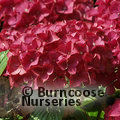
HYDRANGEA 'Alpengluhen'
Mophead - red, medium growing


HYDRANGEA 'Altona'
Mophead - frilled blue or red

HYDRANGEA 'Ami Pasquier
Mophead - deep red, dwarfish habit

HYDRANGEA 'Ayesha'
Mophead - blue or pink lilac-like flowers
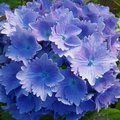
HYDRANGEA 'Benelux'
Mophead - very large deep blue flowers

HYDRANGEA 'Blueberry Cheesecake'
Lacecap - double blue lace-cap flowers with a yellow eye
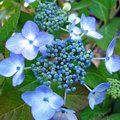
HYDRANGEA 'Blue Wave'
Lacecap - ('Mariesii Perfecta')
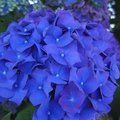
HYDRANGEA 'Enziandom'
Mophead - deepest navy blue on acid soil, one of the finest blues. AM 1993
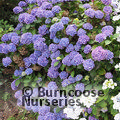
HYDRANGEA 'Europa'
Mophead - purplish-blue to dark pink
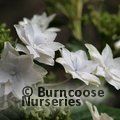
HYDRANGEA 'Fireworks'
Lacecap - (syn. 'Jomari') this exceptional new pure white hydrangea has double star-shaped florets - like exploding fireworks with thin bowed little stems connected with the inflorescence

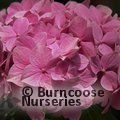
HYDRANGEA 'Generale Vicomptesse de Vibraye'
Mophead - vivid rose or a good blue depending on soil conditions
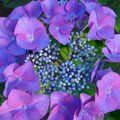
HYDRANGEA 'Geoffrey Chadbund'
Lacecap - red or purple
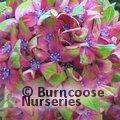
HYDRANGEA 'Glam Rock'
Mophead (syn. Schloss Wackerbath) Pink/purple mophead flowers with green tips and blue centre

HYDRANGEA 'Hamburg'
Mophead - very dense mophead

HYDRANGEA 'Hobella'
Lacecap - flowers white flushed pink in summer fading to green in autumn
Useful extras...
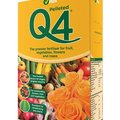
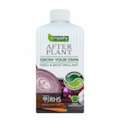
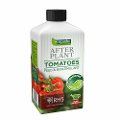
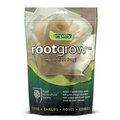
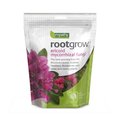
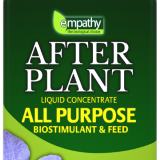



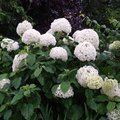

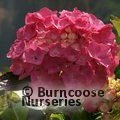


 Gift-wrapping available
Gift-wrapping available




